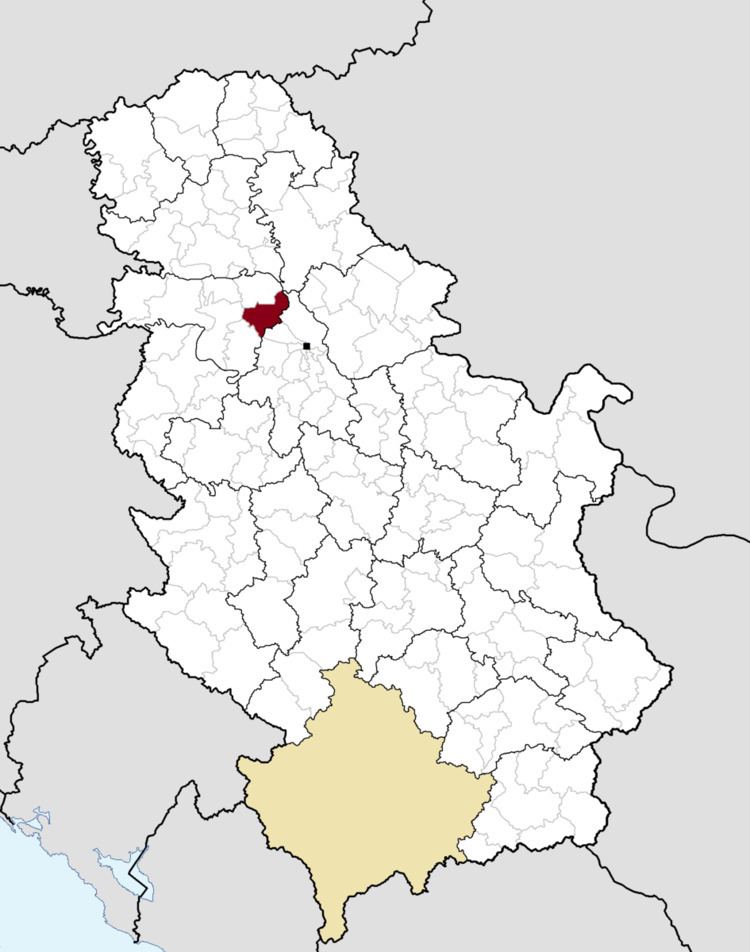Country Serbia Settlements 9 Postal code 22300 Area 351 km² | Time zone CET (UTC+1) Area code +381 22 Local time Sunday 8:31 AM | |
 | ||
Weather 8°C, Wind NW at 14 km/h, 72% Humidity | ||
Rail traffic in serbia stara pazova 2016 elezni ki saobra aj u srbiji 4k
Stara Pazova (Serbian Cyrillic: Стара Пазова, [stâːraː pâzɔv̞a]) is a town and municipality located in the Srem District of the autonomous province of Vojvodina, Serbia. The town has a population of 18,602, while Stara Pazova municipality has 65,792 inhabitants.
Contents
- Rail traffic in serbia stara pazova 2016 elezni ki saobra aj u srbiji 4k
- Map of Stara Pazova Serbia
- Georg darko stara pazova
- Name
- History
- Inhabited places
- Ethnic groups in the municipality
- Ethnic groups in the town
- Historical population
- Twin towns Sister cities
- References
Map of Stara Pazova, Serbia
Georg darko stara pazova
Name
In Serbian, the town is known as Stara Pazova (Стара Пазова), formerly also Pazova (Пазова); in Slovak as Stará Pazova; in German as Alt-Pasua, Alt-Pazua or Pazua; and in Hungarian as Ópazova.
History
During the Ottoman administration (16th-18th century), Pazova was populated by ethnic Serbs and was part of the Ottoman Sanjak of Syrmia. In 1718, the town became part of the Habsburg Monarchy. In the 18th century (after 1760) Lutheran Slovaks settled in Pazova, and in 1791 Germans arrived here as well. Germans lived in separate settlement known as Nova Pazova ("New Pazova"), thus the old settlement was named Stara Pazova ("Old Pazova"). Until the second half of the 20th century, Slovaks were largest ethnic group in the town of Stara Pazova, while largest ethnic group in the surrounding municipality were Serbs.
For most part of the Habsburg rule, Stara Pazova was part of the Habsburg Military Frontier (abolished in 1882), while in 1848-1849 was part of Serbian Vojvodina. In the late 19th and early 20th century, Stara Pazova was a district center in the Syrmia County (part of the Kingdom of Croatia-Slavonia, Kingdom of Hungary and Austria-Hungary). According to the 1910 census, population of the Stara Pazova municipality numbered 46,430 inhabitants, of whom 24,262 spoke Serbian, 9,348 German, 5,779 Slovak, and 5,670 Croatian. [1] The town itself had Slovak majority in 1910.
After 1918, the town was part of the Kingdom of Serbs, Croats and Slovenes and subsequent South Slavic states. According to the 1971 census, 56% of population of the town of Stara Pazova were Slovaks. Today, the largest ethnic group in both town and municipality, are Serbs.
Inhabited places
Stara Pazova municipality includes the town of Stara Pazova and the following settlements:
Ethnic groups in the municipality
All settlements in the municipality have an ethnic Serb majority.
Ethnic groups in the town
Historical population
Historical population of the town in different time periods:
Twin towns — Sister cities
Stara Pazova is twinned with:
